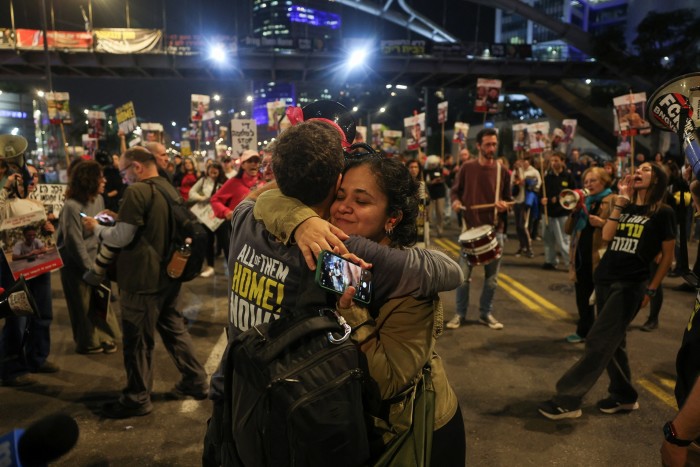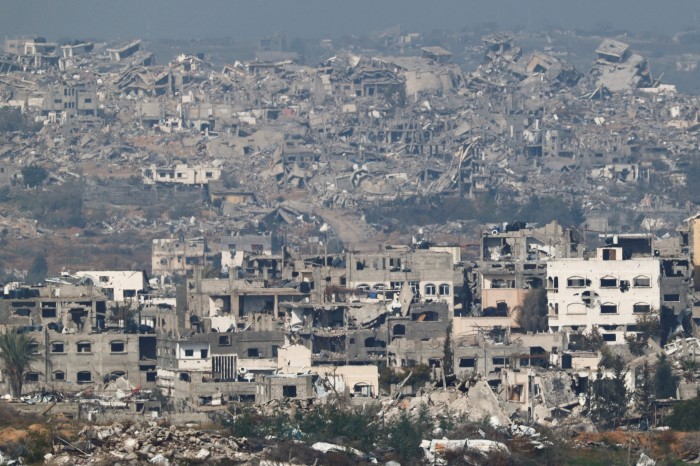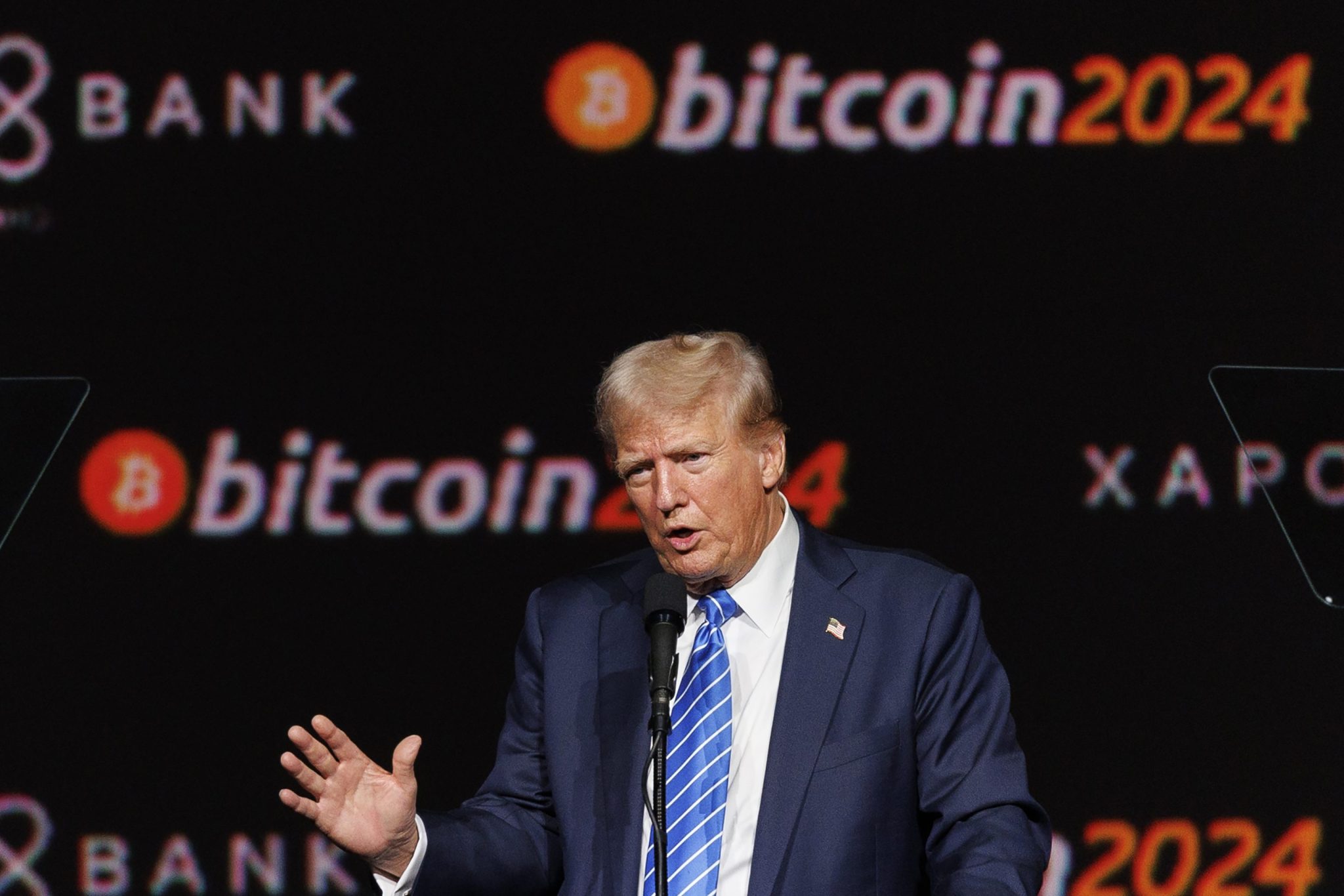Open Editor’s Digest for free
Rula Khalaf, editor of the Financial Times, picks her favorite stories in this weekly newsletter.
Israel and Hamas have agreed on the outlines of a deal to stop the war in Gaza and release the remaining hostages, raising hopes for an end to the bloodiest round of fighting in the history of the Israeli-Palestinian conflict.
But Israeli Prime Minister Benjamin Netanyahu’s office warned that some details still had to be finalized as of Wednesday evening.
The multi-stage agreement comes days before Donald Trump takes office as President of the United States. Trump’s warning to “pay everything” if the hostages are not released before his inauguration on Monday has injected renewed momentum into the long-stalled talks.
“We have a deal on hostages in the Middle East. They will be released soon,” Trump posted on his Truth Social platform on Wednesday.
He added that his national security team “will continue to work closely with Israel and our allies to ensure that Gaza never again becomes a safe haven for terrorists.”
A person close to the Doha-based talks said an agreement was reached after Qatari Prime Minister Sheikh Mohammed bin Abdulrahman Al Thani met with Hamas and Israeli negotiators separately in a final push to reach an agreement.
Netanyahu’s office said that Hamas “caved in at the last minute” to its demand for the complete withdrawal of Israeli forces from the Gaza border with Egypt. But she added: “There are still several open sections in the proposal and we hope the details will be finalized tonight.”

Previous attempts to broker an agreement to end the 15-month-old conflict and secure the release of the 98 Israeli hostages still in Gaza – not all of whom are alive – repeatedly faltered when Israel and the Palestinian armed group refused to make the necessary concessions.
The Israeli government is scheduled to vote on the deal, which is based on a three-stage proposal presented by US President Joe Biden last year. Far-right ministers, including National Security Minister Itamar Ben Gvir, have expressed their opposition, but are not expected to be able to block the deal.
The first phase will include a 42-day truce, during which 33 Israeli hostages – including children and all female prisoners, the sick and the elderly – will be released in exchange for the release of Palestinian prisoners held in Israeli prisons and a significant increase in the delivery of humanitarian aid to Israel. Gaza.
The two parties will begin negotiating the second phase no later than the sixteenth day of the truce. During this phase, the remaining hostages, including male soldiers, are scheduled to be released in exchange for more Palestinian prisoners.
The second phase is also supposed to lead to a permanent ceasefire and the complete withdrawal of Israeli forces from Gaza.
The final stage includes the return of all the bodies of the hostages who were killed, and the reconstruction of Gaza, under the supervision of Egypt, Qatar and the United Nations.
Abu Shukri, a community organizer who resides in the Maghazi refugee camp in Gaza, said people in the neighborhood lined the streets and balconies in anticipation of the announcement. When the news reached them, people screamed and fired into the air in celebration.
“We only thank God,” Abu Shukri said of the news. “But we gave to our children, we gave to our parents.”
The Hamas attack on October 7, which killed more Jews than any since the Holocaust, and Israel’s retaliatory attack on Gaza, sparked a year-long wave of hostilities that shifted the dynamics of The Middle East.

Palestinian militants killed 1,200 people in their attack on Israel, according to Israeli officials, and took another 250 hostage.
The Israeli attack killed more than 46,000 people, according to Palestinian officials, turned a large part of the Gaza Strip into rubble, and sparked a humanitarian catastrophe.
While Iranian-backed militants, including the Lebanese Hezbollah movement, began firing toward Israel in solidarity with the Palestinians, Israel fought the war on multiple fronts. It exchanged direct missile strikes with Iran for the first time, invaded southern Lebanon and launched air strikes on Syria and Yemen.
Additional reporting by Malika Taber in Beirut and Neri Zilber in Tel Aviv
https://www.ft.com/__origami/service/image/v2/images/raw/https%3A%2F%2Fd1e00ek4ebabms.cloudfront.net%2Fproduction%2F628ee1e7-8abf-4f6f-a289-1d8745f4910d.jpg?source=next-article&fit=scale-down&quality=highest&width=700&dpr=1
2025-01-15 17:56:00
#Israel #Hamas #agree #Gaza #ceasefire


